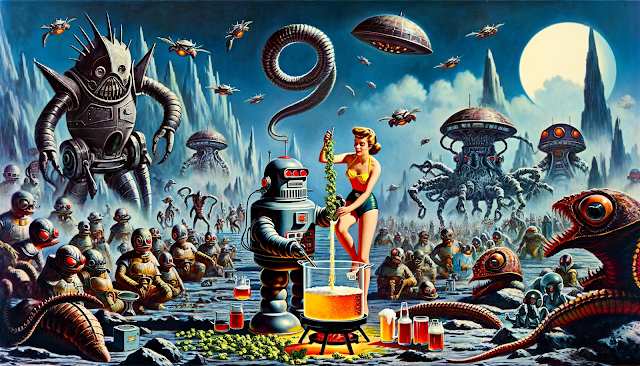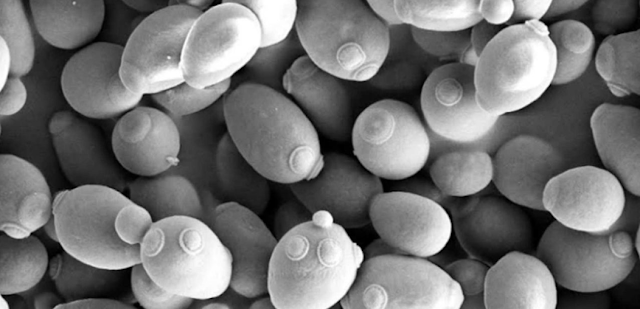Brewing beer can be complex and delicate process that requires precision, patience, and attention to detail.
From selecting the right ingredients to controlling the temperature and timing of each step, there are many factors that can impact the quality and flavor of your beer.
While brewing can be a rewarding and educational experience, it can also be frustrating when things go wrong, especially if you're new to the hobby.
Whether it's a problem with the yeast, the ingredients, the equipment, or the process, there are several common mistakes that brewers make that can affect the outcome of their beer.
This 'brewing mistakes guide' will provide valuable insights into the brewing process and help you to create a better beer with confidence.
From measuring ingredients accurately to using fresh yeast and taking notes, we'll cover a range of topics that can help you to avoid common pitfalls and improve the quality of your beer.
First, a bit like Sheryl Crow, this was our favourite mistake, accidentally bottling, then drinking a beer with a Weta in it...
 |
| Unwanted aliens, a common theme. |
Improper sanitation is a common mistake among brewers.
It's truly the key to fermenting drinkable beer.
To prevent contamination of your beer, it's important to thoroughly clean and sanitize all of your equipment before and after use. This includes not just your brew kettle, but also your fermenter, airlock, thermometer, and anything else that comes into contact with your beer.
You really need to pay attention to this one - an infected beer tastes disgusting and becomes a waste of your time and money.
Here's some great sanitation ideas to consider.
Over-pitching yeast is another common mistake.
Yeast is the workhorse of the brewing process, but too much of it can lead to off-flavors and a lack of fermentation.
To avoid this, make sure to follow the manufacturer's guidelines when pitching yeast to your wort.
A general rule of thumb is to pitch one packet of yeast per 20 - 25 litres of wort.
I once added two yeast packets to a drum - things fermented fast but the beer profile was definitely not what I had intended.
Miscalculating water volumes is also a common issue for brewers.
Accurate measurements of water volumes are important for obtaining the correct original gravity, which affects the final alcohol content, flavor, and mouthfeel of your beer.
To ensure accurate measurements, it's best to use a calibrated hydrometer and to measure both the volume of water added to the brew kettle and the final volume of the wort before fermentation.
Not controlling temperature during fermentation is a mistake that can affect the final outcome of your beer.
Fermentation temperature can influence the yeast's activity, the production of esters and other flavor compounds, and the speed of fermentation.
It's important to maintain a consistent temperature within the range recommended for your yeast strain, and to avoid temperature swings that can stress the yeast or produce off-flavors.
Using a heat mat can help regulate your beer quite well!
Not monitoring gravity during fermentation is another mistake that can impact the quality of your beer.
Measuring the gravity of your wort before and during fermentation gives you a good indication of the yeast's activity, the progress of fermentation, and the final alcohol content of your beer.
It's best to use a hydrometer and to take gravity readings at regular intervals, especially towards the end of fermentation when you're looking for signs that it's time to transfer your beer to a secondary fermenter or to bottles.
Under-hopping or over-hopping your beer is a mistake that can affect the balance of bitterness, flavor, and aroma in your beer.
Hops provide bitterness to balance the sweetness of the malt, as well as flavor and aroma compounds that contribute to the character of your beer.
It's important to follow a recipe or to use a hop-addition calculator to determine the appropriate amount, timing, and variety of hops for your beer style. Timings (i.e. at what point in the boil to add the hops) are crucial to getting the intended style and flavour of your beer.
Krausen explosions are a mistake that can occur during fermentation and can cause a mess in your brewery.
Krausen refers to the foamy head that forms on top of the wort during fermentation as yeast produces carbon dioxide and alcohol. Sometimes, the krausen can become so vigorous that it can overflow the fermenter, releasing yeast, wort, and beer all over the place. T
o prevent krausen explosions, it's important to choose a fermenter that has enough headspace to accommodate the krausen, and to use an airlock or blow-off tube to allow excess pressure to escape without spilling.
You can also reduce the risk of krausen explosions by starting with a properly aerated wort, using a yeast starter to ensure a strong and healthy yeast population, and avoiding temperature swings that can stress the yeast and cause vigorous fermentation.
Not giving your beer enough time to condition or carbonate is a mistake that can result in a flat or harsh-tasting beer.
Bottle Conditioning refers to the process of aging and maturing your beer after fermentation, during which yeast and bacteria can produce by-products that contribute to the flavor, aroma, and mouthfeel of your beer.
Carbonation refers to the process of dissolving carbon dioxide gas into your beer, which gives it the sparkle and head retention that you expect from a properly carbonated beer.
To avoid this mistake, make sure to allow your beer enough time to condition and carbonate before serving, and to store it at a consistent temperature to ensure a consistent level of carbonation. Keep it out of the sun, especially if using green bottles.
Also, if you condition in a place that is tool cold (especially during winter) carbonation will not occur and you'll get flat beer.
Not properly measuring ingredients is a mistake that can result in a beer that doesn't taste as expected.
Brewing is as much a science as it is an art, and it's important to be precise and accurate when measuring ingredients like malt extract, hops, yeast, and water.
To avoid this mistake, use a scale to measure ingredients by weight instead of volume, and use a hydrometer or refractometer to measure the gravity of your wort.
Not adjusting for water chemistry is a mistake that can affect the flavor and quality of your beer.
Different water sources have different mineral contents, pH levels, and hardness, which can impact the flavor, aroma, and mouthfeel of your beer.
To avoid this mistake, consider using distilled or reverse osmosis water, or using a water-treatment kit to adjust the pH and mineral content of your brewing water.
The addition of calcium chloride can also assist with water hardness.
Not using fresh ingredients is a mistake that can result in stale or off-flavored beer.
Hops and yeast are especially sensitive to age and exposure to light and heat, and can quickly lose their potency and viability over time.
To avoid this mistake, store hops and yeast in a cool, dark place, and use them before their expiration date.
Check the freshness of your ingredients by smelling them before use, and discard any that have a rancid or musty odour.
Using old yeast is a mistake that can affect the quality and flavor of your beer.
Yeast is a living organism that plays a critical role in the fermentation process, converting sugar into alcohol and carbon dioxide.
As yeast ages, it loses its viability, vitality, and ability to ferment efficiently, leading to sluggish, incomplete, or contaminated fermentations.
To avoid this mistake, make sure to use fresh yeast that is within its expiration date and has been properly stored.
You can also pitch a yeast starter to ensure a strong and healthy yeast population, and to minimize the risk of off-flavors and infections.
It's also important to note that different yeast strains have different requirements and characteristics, such as temperature range, flocculation, and flavor profile, so choosing the right yeast for your beer style is an important part of the brewing process.
To ensure the best results, research different yeast strains, read the manufacturer's instructions, and follow the recommended pitching rate for your wort volume and gravity.
Finally, not taking notes is a mistake that can make it difficult to replicate a successful beer or to identify and fix problems with a beer that didn't turn out as expected.
Keeping detailed records of your brewing process, ingredients, timing, temperature, gravity, and any other relevant information can help you track your progress and make adjustments in the future.
You can use brewing software, a brew log, or a simple notebook to record your brewing experiences, and to reflect on your successes and failures as you grow as a brewer.
Brewing beer is a rewarding and educational experience that can be enjoyed by people of all skill levels.
However, it's important to be mindful of the mistakes that can occur along the way and to take steps to avoid or fix them.
From measuring ingredients accurately to using fresh yeast and taking detailed notes, these tips will help you to improve the quality of your beer and brew with confidence. And while it's important to follow good brewing practices, don't be afraid to experiment and try new things.
The beauty of brewing is that there are countless recipes (have you made cherry or parsnip wine?), ingredients, and techniques to explore, and the possibilities for creating great beer are endless.
So don't be afraid to take risks, try new things, and find your own brewing style.




0 comments:
Post a Comment